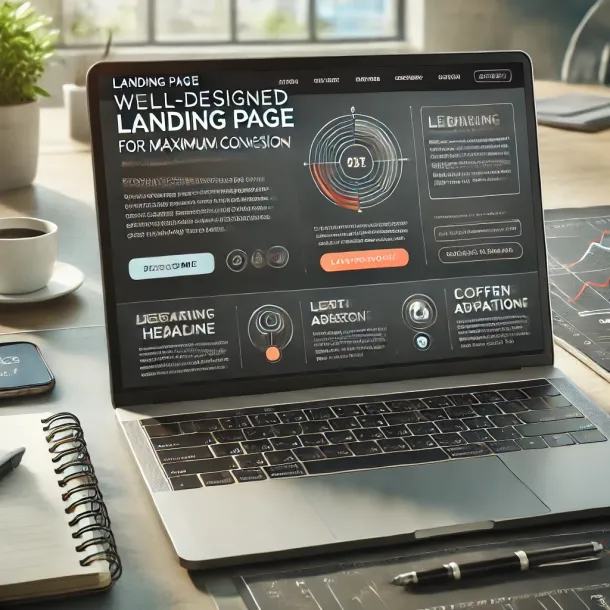Sustainable Design: Creating Environmentally Conscious Solutions
Sustainable Design: Creating Environmentally Conscious Solutions
In today’s world, where environmental sustainability is a pressing concern, designers play a crucial role in creating solutions that are both aesthetically pleasing and environmentally friendly. Sustainable design aims to minimize negative impacts on the environment, conserve resources, and promote social responsibility. In this article, we will explore the principles, practices, and benefits of sustainable design.
Design for Longevity
One of the key principles of sustainable design is creating products that are built to last. By designing durable and high-quality products, we reduce the need for frequent replacements, thereby reducing waste. Consider the lifecycle of the product and select materials that are durable, easy to maintain, and recyclable or biodegradable at the end of their lifespan.
Choose Sustainable Materials
Materials selection is a crucial aspect of sustainable design. Opt for materials that have a low environmental impact, such as recycled or upcycled materials, renewable resources, or materials with a low carbon footprint. Avoid using materials that are known to be harmful to the environment or have high energy-intensive manufacturing processes. Consider the entire lifecycle of the materials, from extraction and production to disposal, to ensure sustainable choices.
Reduce Energy Consumption
Designers can contribute to sustainability by creating energy-efficient solutions. Incorporate energy-saving technologies, such as LED lighting, smart controls, or energy-efficient appliances, into your designs. Focus on optimizing insulation, ventilation, and natural lighting to reduce the need for artificial heating, cooling, and lighting. By minimizing energy consumption, we can lower greenhouse gas emissions and mitigate climate change impacts.
Embrace Minimalism and Simplicity
Sustainable design often aligns with minimalist principles, emphasizing simplicity and functionality. Avoid unnecessary ornamentation and design elements that add no value to the product or space. Adopt a “less is more” approach, focusing on essential features and reducing waste in both material usage and energy consumption. Minimalist design not only reduces environmental impact but also enhances usability and visual appeal.
Implement Circular Design Strategies
Circular design aims to create products and systems that operate in a closed-loop cycle, minimizing waste and maximizing resource efficiency. Incorporate circular design strategies such as recycling, upcycling, and designing for disassembly. By considering the end-of-life options for products and designing for easy disassembly and recycling, we can promote a circular economy and reduce reliance on virgin resources.
Foster Social Responsibility
Sustainable design goes beyond environmental considerations and encompasses social responsibility. Consider the social impacts of your design, such as fair labor practices, community engagement, and equitable access. Collaborate with local artisans, craftsmen, or communities to support sustainable livelihoods and preserve traditional techniques. By fostering social responsibility, we create designs that positively impact communities and promote a more equitable society.
Conduct Life Cycle Assessments (LCA)
Life Cycle Assessments (LCA) evaluate the environmental impact of a product throughout its entire lifecycle. By analyzing factors such as raw material extraction, production, transportation, use, and end-of-life disposal, designers can identify opportunities to reduce environmental impact. Conducting LCAs allows designers to make informed decisions and optimize designs for sustainability.
Engage Users in Sustainable Practices
Designers have the power to influence user behavior and encourage sustainable practices. Incorporate features in your designs that promote energy conservation, waste reduction, and responsible consumption. Provide users with information and guidance on sustainable practices, such as energy-efficient settings or recycling instructions. By empowering users to make sustainable choices, we create a collective impact on the environment.
Collaborate and Share Knowledge
To further promote sustainable design, collaboration and knowledge-sharing are essential. Engage with other designers, researchers, and sustainability experts to exchange ideas, best practices, and innovative solutions. Participate in conferences, workshops, and online communities dedicated to sustainable design. By collaborating and sharing knowledge, we can accelerate the adoption of sustainable design practices and inspire positive change across industries.
Measure and Communicate Impact
Lastly, it’s crucial to measure the impact of sustainable design initiatives and communicate the results. Establish metrics to track environmental indicators, such as carbon emissions reduced or materials recycled. Share the success stories and lessons learned from sustainable design projects to inspire and educate others. By quantifying and communicating the positive impact of sustainable design, we can create awareness and inspire further action.
Consider Biophilic Design
Biophilic design seeks to incorporate elements of nature into the built environment. By integrating natural materials, vegetation, natural lighting, and views of nature into design projects, we can enhance human well-being and connection to the natural world. Biophilic design has been shown to reduce stress, improve cognitive function, and increase productivity. Embracing biophilic design principles not only benefits individuals but also fosters a deeper appreciation and respect for the environment.
Optimize Water Efficiency
Water scarcity is a significant global concern, and designers can contribute to water conservation through sustainable design strategies. Incorporate water-efficient fixtures, such as low-flow toilets and faucets, into your designs. Design landscapes with native and drought-tolerant plants that require less irrigation. Implement rainwater harvesting systems or greywater recycling to reduce reliance on freshwater sources. By optimizing water efficiency, we can conserve this precious resource and mitigate the impacts of water scarcity.
Emphasize Modular and Flexible Design
Modular and flexible design allows for adaptability and reconfiguration over time. By creating modular systems and flexible spaces, we can accommodate changing needs and extend the lifespan of products or buildings. Design products or spaces with interchangeable components, allowing for easy repair, replacement, or upgrades. This approach reduces waste and promotes a more sustainable consumption model.
Incorporate Energy Harvesting Technologies
Explore energy harvesting technologies that harness renewable energy sources. Integrate solar panels, wind turbines, or kinetic energy systems into your designs to generate clean and sustainable energy. These technologies can power lighting, charging stations, or other energy-dependent features, reducing the reliance on traditional energy sources and minimizing the carbon footprint of the design.
Educate and Inspire
Designers have a unique opportunity to educate and inspire others about sustainable design principles and practices. Share your knowledge and passion for sustainability through educational initiatives, workshops, or public speaking engagements. Write articles or contribute to publications that focus on sustainable design. By spreading awareness and inspiring others, we can create a collective movement towards a more sustainable future.
Advocate for Sustainable Policies
Designers can use their expertise to advocate for sustainable policies and regulations at local, regional, or national levels. Engage with policymakers, industry associations, and advocacy groups to promote sustainable design standards, certifications, and incentives. By advocating for sustainable policies, we can create a supportive environment for sustainable design practices and drive systemic change.
Embrace the Circular Economy
The circular economy is an economic model that aims to minimize waste and maximize the value of resources by keeping materials in use for as long as possible. Embrace circular economy principles in your design process by incorporating strategies such as product refurbishment, remanufacturing, or material recycling. Design products with modularity and disassembly in mind to facilitate repair, upgrade, or repurposing. By adopting a circular economy mindset, we can reduce resource consumption and contribute to a more sustainable and regenerative system.
Collaborate with Sustainable Suppliers
Engage with suppliers and manufacturers that prioritize sustainability in their operations. Collaborate with suppliers who offer eco-friendly materials, adhere to ethical production practices, and have a commitment to minimizing their environmental impact. By partnering with sustainable suppliers, we can create a more sustainable supply chain and ensure that the entire lifecycle of our designs aligns with sustainable principles.
Stay Updated with Sustainable Design Innovations
Sustainable design is an ever-evolving field, with new innovations and technologies emerging regularly. Stay updated with the latest advancements in sustainable materials, energy-efficient technologies, and green building practices. Attend conferences, webinars, and trade shows focused on sustainability. Connect with professionals in the field, join industry forums, and engage in ongoing learning to stay informed and continuously improve your sustainability.
Measure and Communicate Sustainability Impact
To truly gauge the effectiveness of sustainable design efforts, it’s important to measure and communicate the sustainability impact of your projects. Establish key performance indicators (KPIs) that align with sustainable goals, such as carbon emissions reduced, waste diverted from landfills, or energy savings achieved. Regularly track and analyze these metrics to evaluate the success of your sustainable design initiatives. Communicate the results and share the sustainability achievements of your projects with clients, stakeholders, and the wider community. By transparently showcasing the positive impact of sustainable design, you can inspire others to adopt similar practices.
Conclusion
Sustainable design is a powerful approach that combines aesthetics, functionality, and environmental responsibility. By designing for longevity, choosing sustainable materials, reducing energy consumption, and embracing minimalism, designers can create solutions that are both visually appealing and environmentally conscious. Implementing circular design strategies, fostering social responsibility, and engaging users in sustainable practices further enhance the positive impact of sustainable design. By collaborating, sharing knowledge, and measuring impact, designers can drive positive change and contribute to a more sustainable future.


